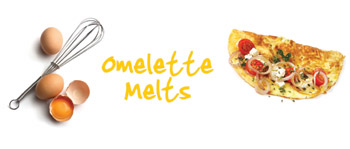Reinventing the wheel

This year’s winner of Best New C-Store Format, Londis-Texoil has produced some real innovations for retailers and customers, and at a time convenience could use it
7 January 2009
At its annual National Retailer Conference at the Heritage golf resort in County Laois, ADM Londis announced its new "state-of-the-art" store innovations for its retail partners to behold; a new store format to "strengthen Londis’ position in the retail market."
At lunch, all delegates were entreated to enter the exhibit store constructed in the dining hall, and sample the coffee and smoothies, or watch the omelettes being made, and see for themselves how innovative it all was from a practical and cost perspective. Of course, a demonstration is never as demonstrative as seeing the real thing in practice, or as informative, so naturally a visit to the Londis-Texoil on the Dublin Road in Monaghan where the new format was already up and running was imperative.
On the day of the visit, the brand new 3000 sq ft store is open nearly four months. A green field site, the new forecourt had been chosen to roll out the full compliment of store innovations because firstly, the location was deemed capable of attracting enough footfall, and secondly, because "we wanted to work with the right operator to ensure it would be maintained," explains Bill Massey, formerly Londis but now Texoil.
Both Massey and Tom Donohoe, Londis regional manager, are on hand on arrival to conduct a tour and explain the thinking behind various aspects of the format design.
A collaborative approach
At the launch of Londis’ new store innovations, group marketing manager, Ruth Norton outlined the 12 month development schedule with specialist retail design consultants McKay Lawrence in which they were produced. The project had one principle aim; to create a new offering that ensured the optimum balance between operational effectiveness and a customer focused retail experience.
There were three key areas focused on for development, Norton outlined, layout and product arrangement, design and feature specifications, and category and product focus.
"We needed to treat this project as if we were designing a store for the very first time," said Norton. So bearing in mind that most customers prefer a convenient, easily-navigable, well-signposted shop, the team set to work to produce a store design focusing heavily on a category layout that facilitated the objectives of each shopping occasion as much as possible. Or, as I see on my visit, that points you in the direction of what you’re looking for the minute you get in the door, rather than taking you through a host of departments you’re not interested in.
The strategy
So what exactly are these layout solutions and design innovations? As Norton puts it, they are layout features designed to "more closely reflect consumer trends, product growth categories and margin potential in order to maximise sales and profit from a particular square footage." In reality, this means colour-coded, drop down or "floating" ceilings crowing each department, and a direct line of access from the front door. Creative lighting and new digital signage and lightbox displays to attract the eye, making navigation easier and enhancing the customer’s shopping experience; or in marketing terms, "adding to the aspirational appeal of the store."
Bill Massey explains: "When we set out to design this we wanted to facilitate the customer, that we weren’t making them meander through the whole shop. They have a task to do when they call in and we wanted to facilitate that task. Whether it’s grab-and-go, grocery or just at the kiosk they want to shop, we wanted to facilitate their needs.
"There is the old adage of bringing people to the back of the shop, but we wanted to lose that. We didn’t see that as an advantage to the customer – who is time-poor – so we wanted to facilitate them in their time in the store, we didn’t want to put any obstacles in front of them."
At this stage in the tour we’re joined by Texoil head of retail Mel Lundy, to talk about what the new store format means from the perspective of his bottom line. "Yes it definitely has had an impact, when you look at the mix of shopping in the store. We have a very strong grocery shop from our local housing estates."
With the new format, and somewhat surprisingly, frozen food is enjoying a significantly above average participation. "Frozen would normally be around 2 to 3% of the business but we’re up at around 7%. The space we give over to it is ample for further growth but it’s a strong category," says Lundy.
However, while the layout aims to facilitate the customer’s immediate needs on entering the shop, it does serve another very important function. This is exemplified by the round, stand-alone chilled display front and centre as you walk in, to which Lundy now draws my attention. Using this kind of display, as opposed to traditional chill walls, gives extra standout and brings the minerals and grab-and-go category to a more prominent position. While it’s not in the way, it definitely attracts attention and furthermore, it creates a line directly to the deli behind it, where hot and cold foods to order are available.
Maximising sales
"We designed the shop around trying to get most out of its sales rather than how a unit would fit in the store," says Massey. This kind of strategic positioning, outlined by Norton in her initial presentation, has also proved successful in driving high-margin food-to-go sales. While grocery is performing better than expected, Lundy says that the deli and food-to-go offering is still by far the strongest department in the store.
Here too was the focus of Londis’ principle category and product innovations, namely its new Plantation Coffee offering, its own brand Juice Berry juices and smoothies, and the Omelette Melts, where fresh omelettes are made to order at the deli counter. Once again, time and investment in developing these new brands is evident, but so too is their effectiveness in drawing that customer spend.
"We’ve had great success with the omelette station. They create a bit of theatre because they’re made on site right in front of you, from scratch. Again it adds to in-store experience," says Massey. "We’d be up around 15%, I’d say, of the overall deli," Lundy adds, although he points out that, as with any new concept, it doesn’t necessarily sell itself.
"It’s a hard exercise; a lot of sampling, a lot of tasting. But I was in here not so long ago and there were three or four guys with high-vis jackets on – which are few and far between in this current climate – it would normally be the breakfast baguette but all four of them sat down with omelettes; the healthy option. It’s very strange to watch it happening but I’ve seen it. If you’re going to ask me ‘who buys them?’ Everybody buys them, right across the spectrum."
The Juice Berry drinks station has also proved a winner for the store, with a very useful added advantage. "Traditionally you would have a metre given to a juice and smoothie counter, fitted out and staffed," Massey points out. "It takes up a meter in a prime location, at your deli. So we wanted to take it out of there because we felt it’s a good concept there’s no question about that, juice as a whole, but to give a metre in your deli? Where in the wintertime you’ll see a dramatic fall in it; so we felt it was debatable whether that’s justified. Plus paying someone to put the fruit into a blender and serve it out over the counter, that’s highly debatable too. There’s great margin in self-service and it’s a top quality product."
The Juice Berry unit itself occupies a mercifully small footprint and can be easily moved into storage during times of the year when sales do not justify its presence on the shop floor. "Especially now, when cash-flow is key, people need to make sure that what they have on their shelves is selling," adds Massey.
The verdict
So, most importantly, what do the customers think of this new format? Mel Lundy is quick to respond: "At this site people have said they find it a very friendly open environment, very bright, very airy. The results have been fantastic. I’ve seen this place here at lunchtime with 20 to 30 people sitting in it.
"At this stage, we realise you have to offer something over and above your competitors, you have to go one step further than everybody else, you have to be more than just a convenience store."
So from the customer’s perspective, the figures are speaking for themselves, but what about the retailer? Is this truly a new format that can be sustained and enhance a business for several years to come? Bill Massey, newly returned to the "coalface" of retail, answers: "Where I think we differ on this one is, operationally and from a sales point of view, is that it’s focused on the customer. It isn’t all about the bells and whistles, it’s about driving business through a shop.
"Obviously we wanted the ‘wow factor’ but it isn’t just about that. We wanted this to make sense for the retailer and the customer, not only in terms of turnover but in terms of margin as well. 20 to 21% just isn’t going to cut it these days, you need mid 20s at least to cover your overheads."
The format is adaptable to different types of space and can be tailored to suit the needs of different businesses, he explains. "It’s very, very adaptable; we don’t have to reinvent the wheel every time, and we’re particularly proud of that factor." Well, seeing is believing, I say.



 Print
Print






Fans 0
Followers